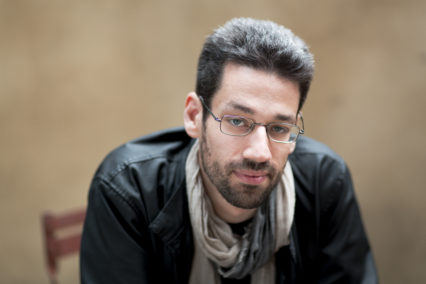In a recital of contrasts, the American pianist Jonathan Biss takes us from the prim world of the Esterházy court where Haydn was Kapellmeister, to Schumann’s energetic Davidsbündlertänze (Dances of the Band of David).

When performing piano repertoire by composers from different eras such as Esterházy, it is easy to forget the developments the instrument underwent across the classical age. Such were the changes in the construction of the piano that pianists should adapt their style to each era. Haydn’s piano sonatas were written for the fortepiano, which had limited capability in terms of sustain, unlike modern pianos that have a pedal fitted for that purpose. Piano compositions from this period, therefore, demand that expression be achieved not through sustain pedal, but by careful finger work. In short, the hands should take a clear lead over the feet when it comes to sustaining phrases. It is easy to underestimate the difficulty of this task, especially when the fashion amongst pianists is unbridled articulation. But Biss would have given a more convincing performance of the Haydn had he relied on the pedals less, and his knowledge of the musical phrasing more. This would have resulted in a sound faithful to the origins of the piece.
That said, Biss presented the unusual character of this A-flat sonata with great sophistication. Each of the many appoggiaturas, especially in the first movement, were heard distinctly and for a good duration. The Adagio, in particular, was extremely well executed. So much so, that when it ended, one felt as though being lifted gently out of a dream. Such delicate music ought to be played delicately, and Biss’s light touch did the job.
The Beethoven did not impress as much – surprising for a musician who has dedicated a substantial part of his career to teaching Beethoven’s piano sonatas, and authored the eBook Beethoven’s Shadow. Whilst it was a powerful performance con Fuoco, this came at the price of sensitivity. Satisfying cadential moments were rushed away from too quickly, leaving the listener hungry for more of that special way Beethoven moves to distant keys through daring harmonies.
But perhaps that was the point. After all, Biss has had a career distinguished by his strong focus on individual composers – most of all Beethoven and Schumann. Perhaps he was striving for a rushed feeling.
The trio of sonatas that constitute Opus 31, completed in 1802, comes from a time of doubt in the composer’s life. Having recently realised that his hearing was getting worse, Beethoven’s increasing uncertainty about his health began to make its way into his music. The sonatas became more impulsive, freeing themselves of their classical constrictions. It was around this time that Beethoven’s piano writing gradually took on the revolutionary character that was to define the later works.
So maybe this was what Biss had in mind. In any case, he changed his tune for the Mozart pieces and managed to bring out the effortless charm we associate with the Austrian master. Witty melodies gave way to yet wittier ones, as Mozart’s bright persona beamed through the Menuet in D. By contrast, the subtle drama of the Adagio in B minor was arresting, showcasing the darker side of Mozart’s personality.
A few years ago, Biss declared himself to be ‘a fanatic for every note Schumann wrote’. This fanaticism dominated his performance of the Davidsbündlertänze. The two opposing sides of Schumann, captured in the characters of Florestan and Eusebius, battled for control in a work of extraordinary polarity. By degrees, Biss gave a turbulent and tender rendering of a piece that is ideally given in exactly that manner. The contrast was effective.
Jonathon Biss performed an Esterházy-Esque court at the RWCMD.











